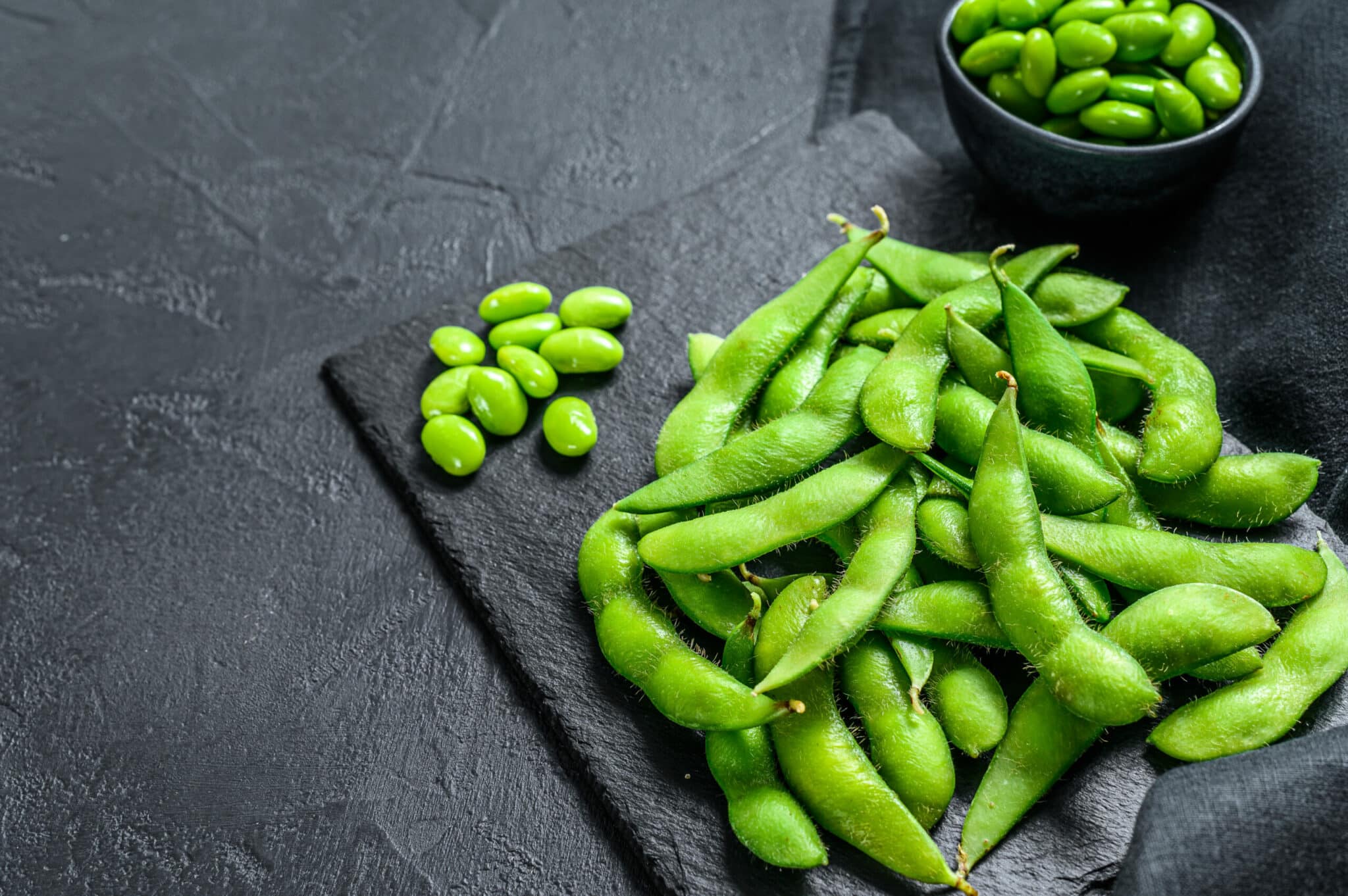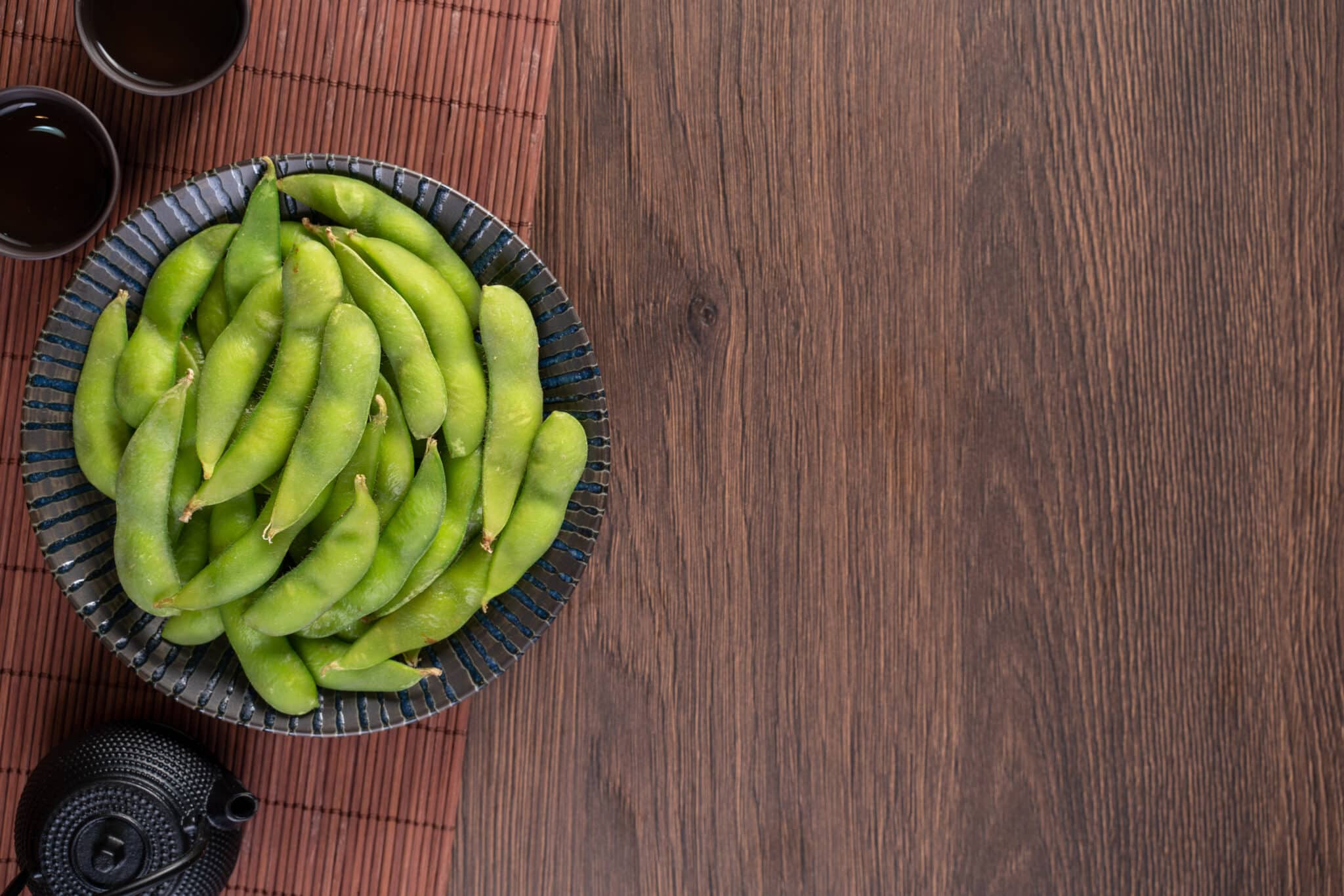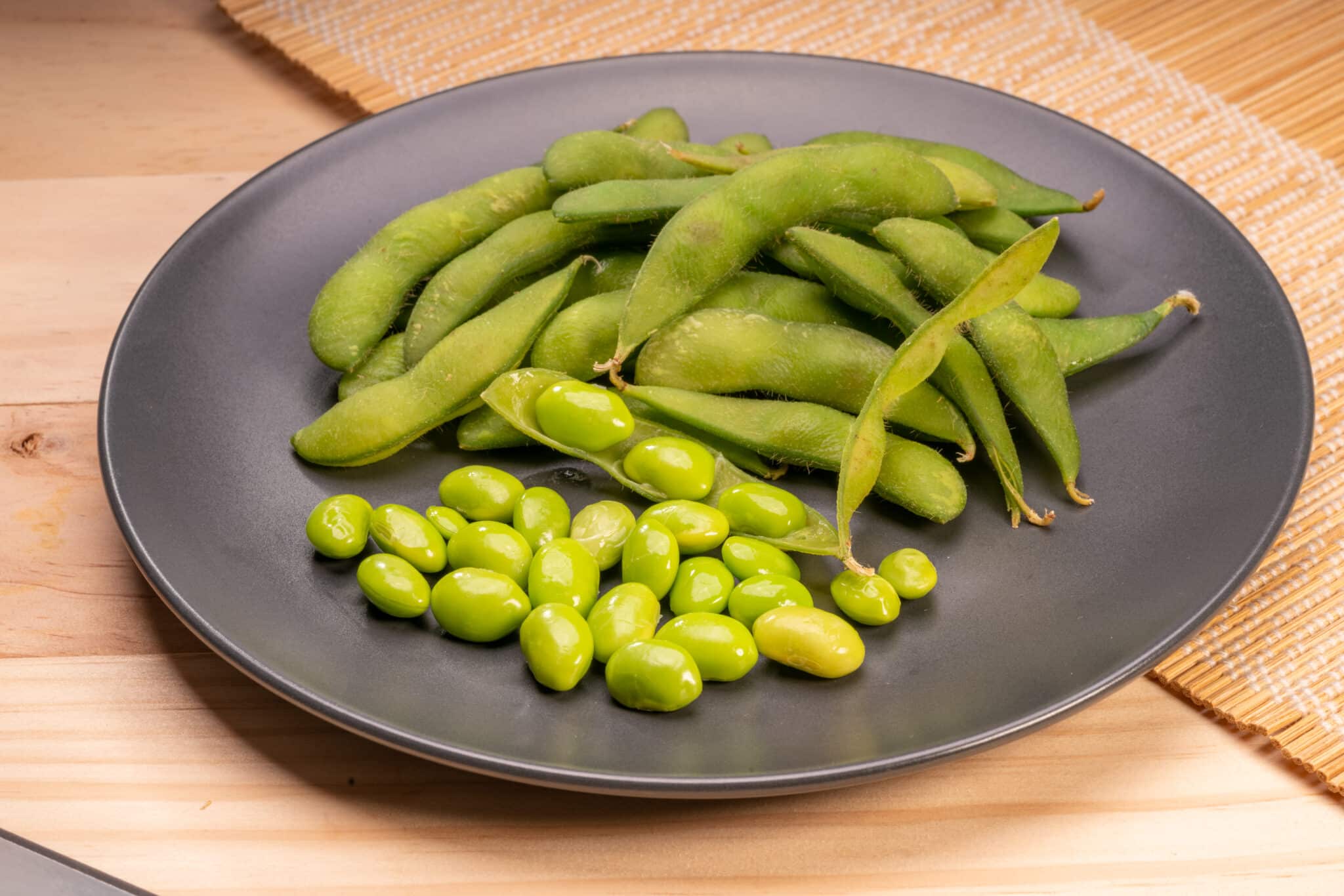What edamame tastes like is one of the most often asked questions. They’re basically soybeans with a nutty flavor and a buttery flavor. Because it contains enough amounts of nine essential amino acids, edamame is also a good source of protein. Eating edamame is an excellent choice for meat-free eaters because it is low in carbohydrates and high in protein. It has a low glycemic index, providing plenty of energy without boosting blood sugar levels. It also has a high dietary fiber, vitamin, and mineral content.

Even though edamame is made from the same soybean used to produce tofu, it has a more robust flavor than the bland bean curd. It has a somewhat pea-like flavor and is buttery in texture, with a tinge of sweetness and nuttiness. On the other hand, the texture is more challenging than a pea—soft but with a bite. To keep edamame crisp and crunchy, prepare it ahead of time, preferably in a microwaveable container. If you don’t have time to prepare them yourself, you can buy precooked edamame at the shop.
What is edamame?
Edamame is a soybean collected when it is still young and green. Because of this, edamame is soft and edible, as opposed to mature soybeans, which are complex and dry and are used to produce soy milk and tofu. Edamame is a Japanese name that translates as “beans on a branch.” Edamame is most commonly found in East Asian cuisine and is available in the pod and hulled. Even though the pod itself is not edible, it contributes to the flavor of the edamame, making it a delicious snack. The hulled variety is excellent for incorporating into rice recipes and salads. Edamame is a low-cost vegetable, with the price of hulled edamame being somewhat higher.
When it comes to Japanese culinary establishments, edamame served in the pod is a popular first dish. It is an excellent alternative for vegetarians, vegans, and anyone looking to eat more healthfully, thanks to the high concentration of low-fat soy protein in it. Edamame is available in both fresh and frozen forms.
What does edamame taste like?
The taste of these tiny soybeans is very mild and satisfies the craving. Even though soybeans are used to make tofu, tempeh, and other familiar soy products, edamame flavor has little in common with that of the other soy products, save for its mildness.
It is more accurate to say that the taste of edamame is vaguely similar to that of peas; nevertheless, whereas the sweetness of a pea is intense, the sweetness of edamame is moderate. In addition, edamame has a nuttiness to it that can be comparable to that of almonds.
Cooked or boiled edamame has a similar texture to primed peas, but it is not precisely the same. The edamame pods are the portions of the soybean that are most commonly consumed because they are stiff and fibrous in texture and flavor. The soybeans that are contained within the pod are also consumed. Edamame has a flavor described as a cross between peas and green beans. The edamame pod’s exterior is a touch rough and lumpy.
Although it is stiffer to chew, edamame has a flavor comparable to green beans. This is why edamame is a decent broad bean substitute. They’re chock-full of health benefits. They are high in fiber and protein and can help lower bad cholesterol and enhance the immune system. They’re a good source of calcium and iron. They are an excellent energy source and may be utilized in various dishes.
The texture of edamame
Even though they taste relatively similar to cooked peas in flavor and texture, cooked or steamed edamame (raw edamame is hazardous) has a somewhat different consistency.
Emma is firmer than peas, which contrasts with their soft and luscious texture. They’re not squishy, but they’re soft nonetheless, and the texture is more similar to a mashed potato after being cooked.
How do you cook edamame?
Boiling, steaming, microwaving, and pan-frying are all options for cooking edamame. To boil, place fresh, in-shell edamame in a pot of boiling, salted water and cook until the beans are soft, about 5 to 6 minutes. 1 to 2 minutes of boiling frozen edamame. If preferred, drain and rinse the pods with cold water.
To steam edamame, fill a pot halfway with water and bring to a boil. Place the edamame above the boiling water in a steaming basket, steam tray, or colander. Cover the saucepan and steam until the edamame is soft, about 5 to 10 minutes for fresh edamame and 3 to 8 minutes for frozen edamame. If desired, rinse to chill down. Place frozen edamame in a microwave-safe bowl and cover it with water for the microwave technique. Cover the bowl with plastic wrap and microwave on high for 3 minutes, checking after 1 minute. Allow for cooling before handling the edamame.
Cook the edamame in a hot frying pan over medium-high heat to give it a smokey flavor. Allow the pods to heat until gently browned on one side, then flip them to scorch the other. Cook, until the vegetables are soft and warm, or hot is fine.
Seasoning can be added to the edamame pods before or after shelling. Try experimenting with different types of sea salt, red pepper flakes, and sesame seeds.

What is the best way to eat edamame?
Edamame can be eaten in various ways, from eating the soybeans straight from the pods to incorporating them into your dish. Edamame pods are a popular Japanese snack frequently offered as an appetizer or with a glass of cold beer in restaurants. Edamame is traditionally blanched in gently salted water and served warm or cold from the pods. It’s easy to eat edamame: simply squeeze the beans from the pods into your mouth and discard the shells in a separate bowl.
The vegan edamame black bean burger is excellent for developing new veggie burger concepts. It’s made with black beans, edamame, bread crumbs, oats, and seasonings, then topped with vegan mayo flavored with soy sauce and arugula. If you want to add more protein to the recipe, press the tofu first to remove excess moisture.
Can you eat the edamame pods?
The edamame pods are not the sections of the edamame that you should consume, and they’d be far too rough and fibrous in the first place. Instead, you consume the soybeans that are contained within the pods.
One of the most effective ways to consume edamame is to cut the pod in half lengthwise and squeeze the beans one at a time directly into your mouth.
Putting the pod in your mouth and biting down without penetrating the skin is yet another method of consuming edamame. Next, gently take the soybeans out of the shell using your teeth.
How should edamame be stored?
Because the flavor of fresh edamame begins to diminish as soon as it is picked, it is best to eat the soybeans as soon as possible after harvesting. Refrigerate for a day or prepare ahead of time and store in the fridge for up to a week.
Edamame can also be frozen and saved in an airtight container for later use. Edamame can be frozen for up to a year. Edamame only lasts a few hours at room temperature if you choose for the pantry. Place the pods in a permeable bag, store them away from moisture and heat in a well-ventilated room, and use them for less than a day.
How can you know if your edamame is bad?
Fresh edamame has a vivid green color. When the pods or beans have gone wrong, they become yellow. The most typical color is darkened beans. Freezer burn causes discoloration in frozen edamame. If you notice any yellowing, it’s best to throw them out.
Another sign that edamame has gone wrong is if it has become sticky and mushy. They’ve outlived their usefulness and should be discarded. Any beans with mold developing on them, whether outside or inside, should be thrown aside. When bacteria start to grow on them, mold appears.
Edamame’s health benefits
According to Healthline, when it comes to edamame, there are various health benefits (as well as a few worries and falsehoods). Benefits include possibly lowering breast cancer risk, lowering blood pressure, and lessening the effects of menopause. The beans are also a good source of vitamins and minerals.
While there are specific issues about soy eating regularly, as Healthline points out, the main selling point for this small green legume is that it is a good (and vegan) source of protein. Whereas most plants have very little protein, edamame has about 20 grams per cup. It also has a variety of amino acids, which is a big bonus for everyone, but especially for individuals who don’t obtain protein from animal sources. We’re not sure what else qualifies as a superfood.
Conclusion
The flavor of edamame is similar to that of green beans and peas. The bean is more challenging than a pea, yet it’s still soft and tasty. Edamame should be eaten on the same day as it is harvested. When buying frozen edamame, make sure the pod is dry and wet to minimize discoloration. Edamame is readily available and may be found in most supermarkets’ freezer sections. They are available fresh at Asian food stores, specialized produce markets, and farmers’ markets during the summer. They can be found frozen or in pods at Japanese supermarkets. Edamame can be found in almost every Asian country. They can also be purchased frozen. In many regions of the world, this vegetable is commonly consumed.
However, while the flavor of edamame varies based on the variety of soybeans used, the edamame bean is usually a light brown or green in appearance. Snow peas, another type of legume, have a texture similar to this legume. Even though they are both green and have a nutty flavor, the technique in which they are prepared is distinct. Edamame, in whatever form, is a nutritious addition to any diet.
